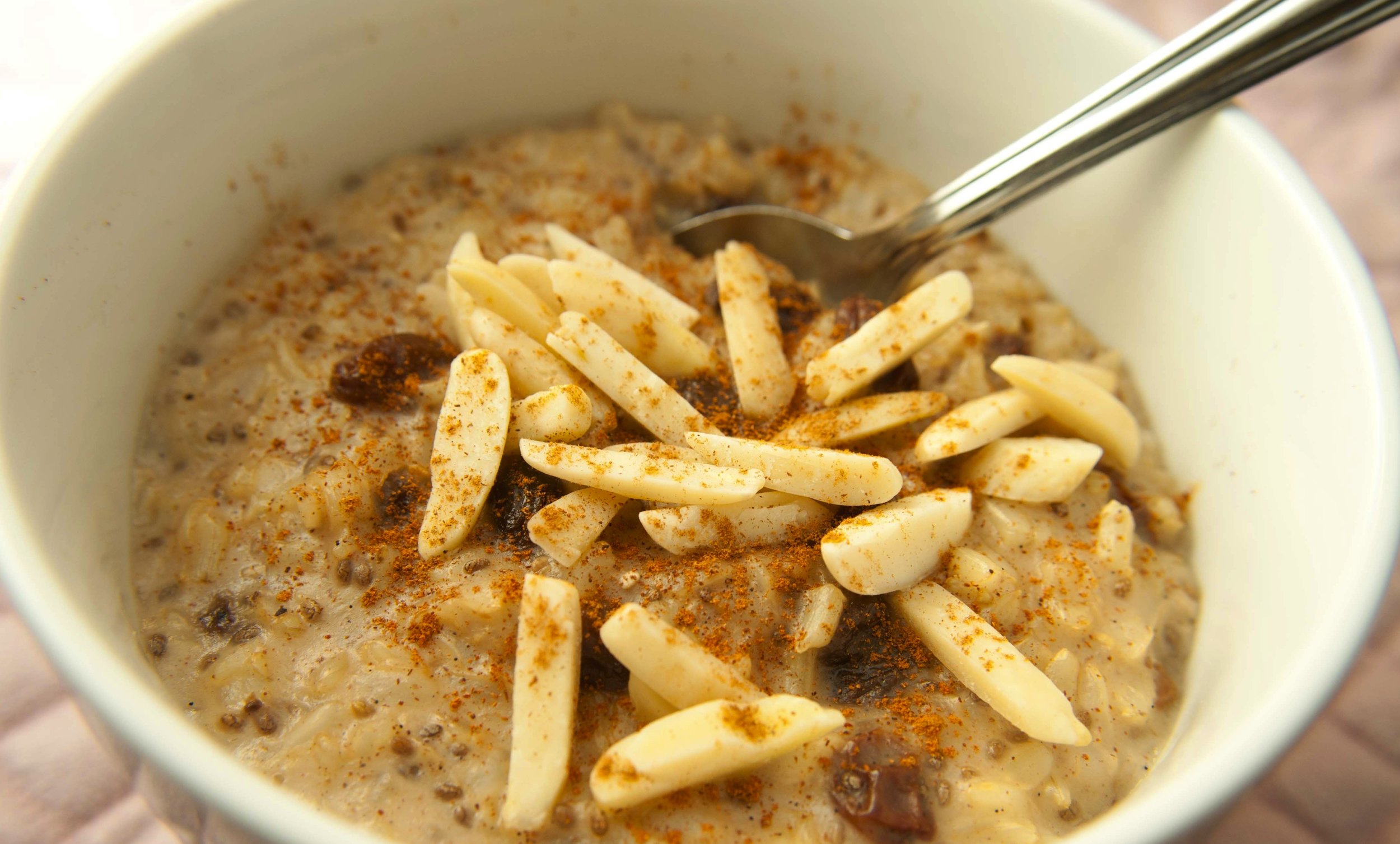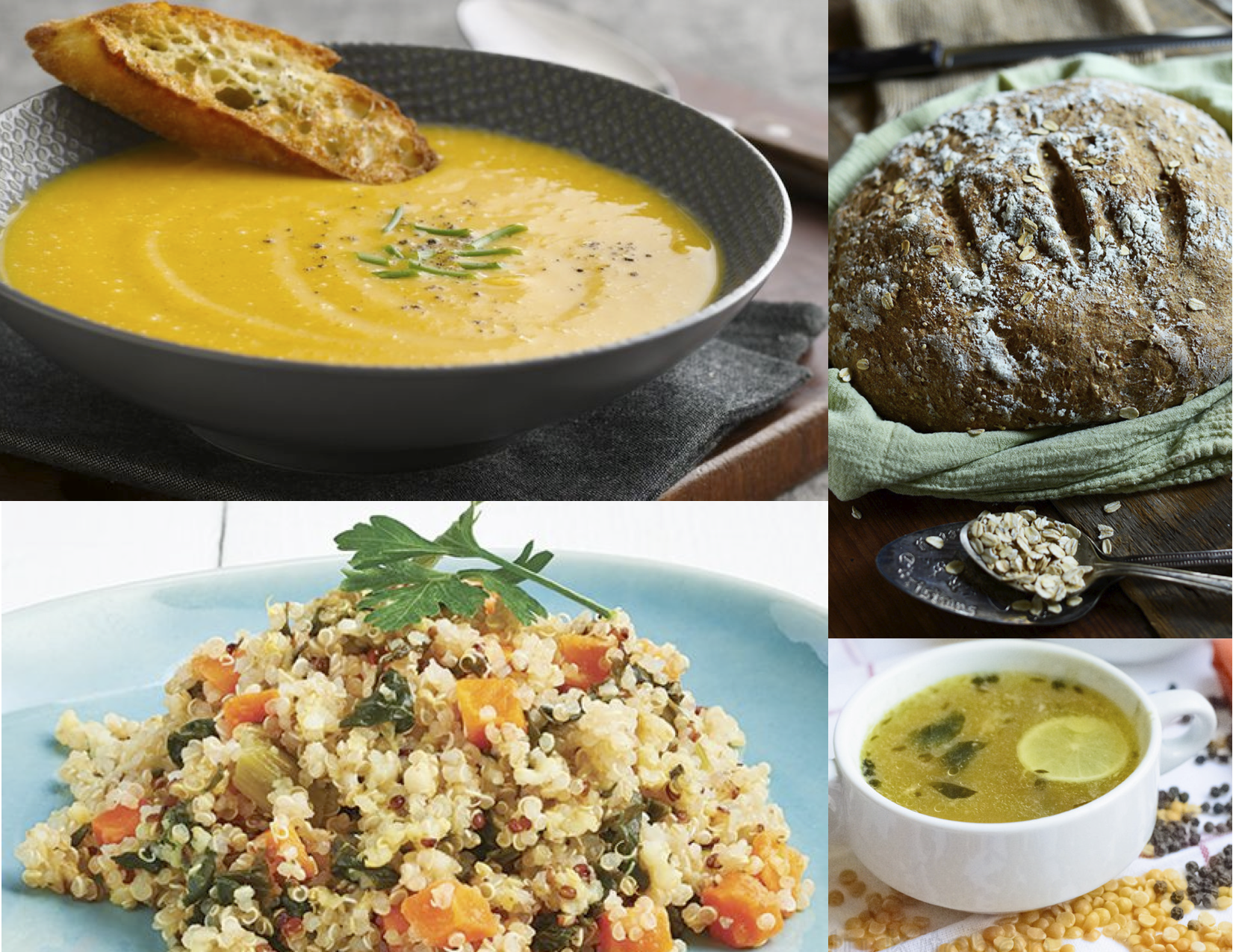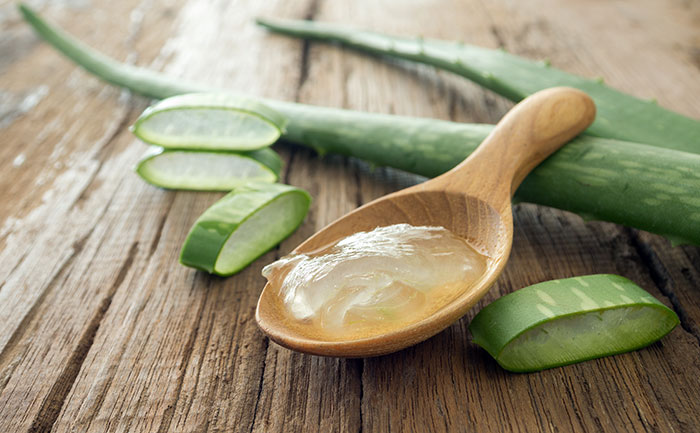Ayurvedic dietary principles call for us to largely avoid refined sweets and excessively cold, dry, unctuous, salty, and fatty foods. I know this seems hard during the holidays, but if you keep this wisdom in mind, you may notice the ease that it brings to your body and mind. Because winter is considered a primarily kapha season, the meals you eat during this time should incorporate slightly more of the pungent, bitter, and astringent tastes that pacify this dosha. However, winter’s heavy, moisture-laden atmosphere frequently gives way to the dry, windy conditions of the vata dosha, so it’s also important to focus on vata-balancing foods and tastes on days when this type of weather prevails. Overall, you should eat warming meals that balance kapha and vata and help you adjust to the predominant weather conditions. Also be mindful of your agni, or digestive fire. Since kapha conditions can contribute to sluggish digestion, eat at regularly scheduled times without skipping meals or overeating. As always, eat your largest meal at lunch, when the digestive fire of pitta is strongest.
Here are some simple, tasty recipes that will make it easier and more enjoyable to maintain a dosha-balancing wintertime diet.
Creamy Butternut Squash Soup (serves 4)
· ½ gallon water
· 1 small butternut squash, peeled and cut into 1-inch cubes
· ½ cup rolled oats
· 1 tablespoon finely chopped fresh cilantro
· 1 tablespoon cumin powder
· 1 teaspoon coriander powder
· ½ teaspoon turmeric powder
· ½ teaspoon finely ground black pepper
· 1 tablespoon grated fresh ginger
· juice of 1 fresh lemon
· 1 tablespoon rock salt
· 1 tablespoon soya oil
· 2 scallions, chopped
· parsley
· watercress
Bring water to a boil in a large pot. Add squash, oats, cilantro, and spices, including black pepper and salt, fresh ginger, and lemon juice. Cover and simmer on medium heat for 35 minutes. Transfer to the mixture to a blender and puree until smooth. Return to pot. Heat oil in a small skillet, and sauté scallions for about 2 minutes; then add to the pureed soup. Cover and simmer 5 minutes. Serve hot and garnish with fresh parsley and watercress.
Seven-Grain Bread (serves 4)
· 1 tablespoon natural yeast
· ½ cup warm water
· 2 tablespoons sesame butter
· ½ cup spelt flour
· ½ cup unbleached whole wheat flour
· ½ cup soya flour
· ½ cup millet flour
· ½ cup oat bran
· ½ cup rolled oats
· ½ cup cracked wheat
· 1 tablespoon Sucanat
· ½ teaspoon rock salt
· 1½ cups warm water
Dissolve the yeast in warm water; then dilute the sesame butter in the yeast solution. Combine the flours, bran, rolled oats, cracked wheat, Sucanat, salt, and remaining water; then add the yeast-sesame butter mixture. Knead into a sticky dough. Transfer dough to a large oiled bowl. Cover securely and let rise in a warm place for 40 minutes. Punch down the dough, cover, and let rise again for 40 minutes, until it doubles in size. Form dough into four rolls, and place on oiled baking trays. Bake at 350 degrees for 25 minutes.
Whole Mung Dhal (serves 4)
· 1 cup whole mung dhal
· 2 ¼ cups water
· ¼ teaspoon turmeric
· 1 pinch sea salt
· 1 tablespoon ghee
· 1 minced green chili pepper
· ½ teaspoon grated ginger
· 1 tablespoon masala
· 1 teaspoon fresh lemon juice
Wash mung dhal until water runs clear. Soak in 3 cups of cold water overnight. Drain. Boil 2 cups of water and add dhal, turmeric, and salt. Cover and simmer over medium heat for 50 minutes. In a small skillet, heat ghee, green chili pepper, and ginger for a few minutes. Add the masala toward the end of browning. Add to dhal with lemon juice and remaining water. Cover and continue to simmer for an additional 30 minutes over low heat.
Sautéed Golden Beets with Masala (serves 4)
· 4 golden beets
· 1 tablespoon sunflower oil
· 1 tablespoon masala
· 2 yellow onions of shallots, cut into half-moon slices
· 1 teaspoon rock salt
· 1 tablespoon minced fresh parsley
Scrub the beets and cut into bite-size pieces. Heat sunflower oil in cast iron skillet. Stir in masala and cook until slightly browned. Add shallots, beets, and salt. Stir in two tablespoons of water. Cover and allow to cook on medium heat for 5 minutes. Remove from heat, garnish with fresh parsley, and serve hot.
Caraway Brown Rice (serves 4)
· 2 cups long-grain brown rice
· 3½ cups boiling water
· 1 pinch of sea salt
· 2 teaspoons of caraway seeds
Wash rice until water runs clear and add to boiling water. Add salt. Cover and simmer over medium-low heat for 25 minutes. Dry-roast caraway seeds in a small cast iron pan until golden. Add to rice mixture and cook for an additional 5 minutes. Serve warm.
Red Cabbage and Onion Soup (serves 4)
· ½ gallon of water
· 1 small red cabbage shredded
· 2 red onions, chopped
· 1 tablespoon coriander powder
· ½ teaspoon cayenne powder
· 1 tablespoon dried dill
· 1 tablespoon dried parsley
· 2 cloves of garlic
· 1 tablespoon of rock salt
· ¼ cup cashew butter
· 1 red onion, cut into thin half-moon slices
Bring water to a boil in a large soup pot. Add the cabbage and onions, along with the coriander and cayenne powders, dried dill, parsley, and salt. Lightly crush the garlic cloves with a handstone and remove the skin. Add the lightly crushed cloves of garlic to the soup mixture. Cover and simmer on medium heat for 35 minutes, until onions are practically dissolved. Add cashew butter to the soup and stir until it dissolves. Garnish the hot soup with thinly sliced red onions; remove from heat, cover, and let sit for 5 minutes. Serve hot with a heaping dollop of Millet Supreme.
Millet Supreme (serves 4)
· 3½ cups water
· 2 cups millet
· ¼ cup fresh peas
· ½ teaspoon turmeric
· ½ teaspoon cumin powder
· ½ teaspoon ajwain seeds
· 1 teaspoon rock salt
· 1 tablespoon sunflower oil
· ¼ cup currents
· ½ cup roasted almonds, slivered
· juice of ½ lemon
Bring water to a boil in a medium-sized saucepan. Thoroughly wash the millet, and add to boiling water, along with the peas, turmeric, cumin powder, ajwain seeds, and salt. Cover and simmer on medium heat for 20 minutes. Heat the oil in a small skillet, and add the currants and almonds. Stir for another few minutes until currants begin to swell. Add the lemon juice. Add to the millet, and continue cooking for 10 minutes more. Serve warm.
Disclaimer
The sole purpose of these articles is to provide information about the tradition of Ayurveda. This information is not intended for use in the diagnosis, treatment, cure, or prevention of any disease.


















